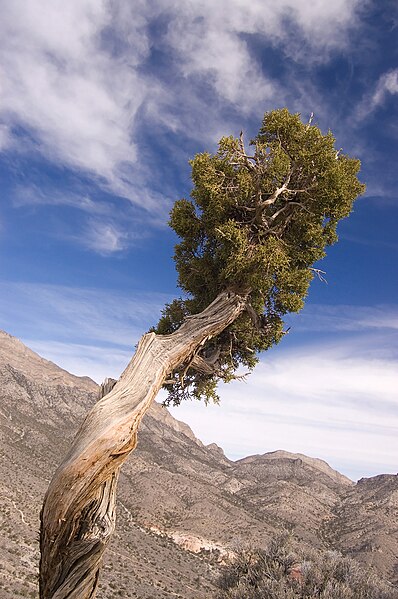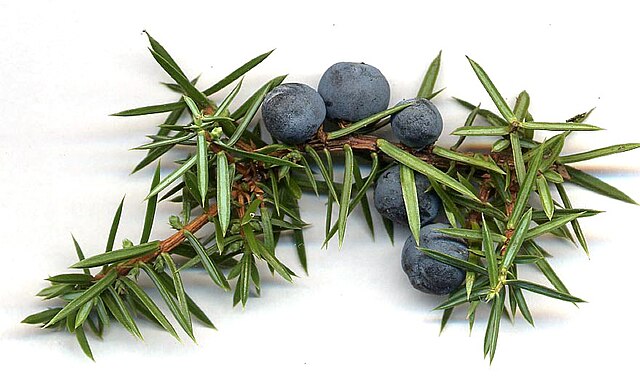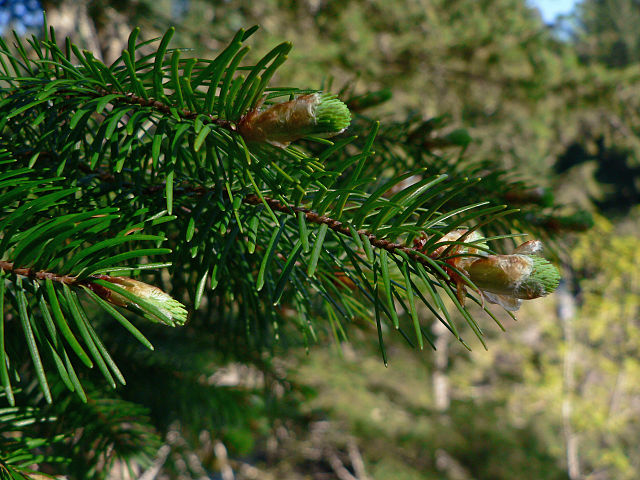Junipers are coniferous trees and shrubs in the genus Juniperus of the cypress family Cupressaceae. Depending on the taxonomy, between 50 and 67 species of junipers are widely distributed throughout the Northern Hemisphere, from the Arctic, south to tropical Africa, throughout parts of western, central and southern Asia, east to eastern Tibet in the Old World, and in the mountains of Central America. The highest-known juniper forest occurs at an altitude of 4,900 metres (16,100 ft) in southeastern Tibet and the northern Himalayas, creating one of the highest tree lines on earth.
Juniper
Cones and leaves of Juniperus communis
Detail of Juniperus chinensis shoots, with juvenile (needle-like) leaves (left), adult scale leaves, and immature male cones (right)
Juniper needles, magnified. Left, J. communis (Juniperus sect. Juniperus, needles 'jointed' at base). Right, J. chinensis (Juniperus sect. Sabina, needles merging smoothly with the stem, not jointed at base)
Conifers are a group of cone-bearing seed plants, a subset of gymnosperms. Scientifically, they make up the division Pinophyta, also known as Coniferophyta or Coniferae. The division contains a single extant class, Pinopsida. All extant conifers are perennial woody plants with secondary growth. The great majority are trees, though a few are shrubs. Examples include cedars, Douglas-firs, cypresses, firs, junipers, kauri, larches, pines, hemlocks, redwoods, spruces, and yews. As of 2002, Pinophyta contained seven families, 60 to 65 genera, and more than 600 living species.
Conifer
The narrow conical shape of northern conifers, and their downward-drooping limbs, help them shed snow.
Tāne Mahuta, the biggest kauri (Agathis australis) tree alive, in the Waipoua Forest of the Northland Region of New Zealand.
Pinaceae: needle-like leaves and vegetative buds of Coast Douglas fir (Pseudotsuga menziesii var. menziesii)








